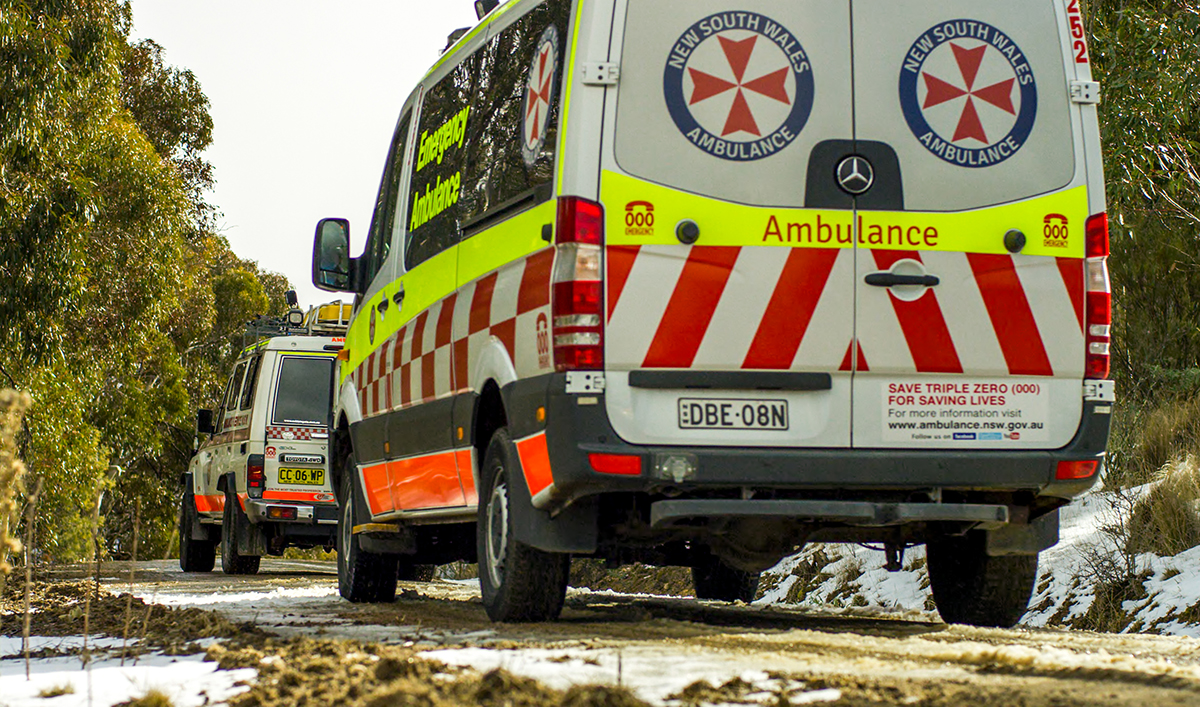Access Requirements: Ambulance Vehicles and Equipment
Ambulance access to buildings and hospitals should provide ample space at entrances and on driveways to set down and pick up patients.
Design criteria
The following factors must be given prime consideration in the design of an ambulance entry.
Ambulance driveways should be exclusive to ambulance vehicles.
Entrance to driveways should indicated with a clear directory sign, which may read, "AMBULANCE ENTRY" or "AMBULANCE ONLY". In some locations the sign may need to be illuminated.
Surfaces to driveways should be smooth but non slip and be without uncovered drainage gutters or speed humps.
Access specifications
- Ambulance Access Specifications for Hospitals and Other Buildings (PDF, 433.96 KB)
- Stretcher and Vehicle Dimensions (PDF, 438.78 KB)
Turning circles
Turning circles and clearances to kerbs, existing buildings or other obstructions are for the current largest size of ambulance vehicle which requires a minimum turning circle of 15 metres.
Entrance canopies
The canopy over the entrance is to be large enough to provide ample cover for two paramedics to unload the patient from the rear of the vehicle.
The surface beneath the canopy should be level and non-slip and ideally at the same level as the entrance to the building. Canopies must be clear of the vehicle turning circles and the stretcher handling area.
Height of Canopy
The minimum height of the canopy from finished paved area to the underside should be 3.8 metres.
These dimensions are required to accommodate roof mounted radio aerials.

Fleet vehicles
NSW Ambulance has one of the largest and most modern public ambulance fleets in the world, made up of approximately 1500 vehicles, of which approximately 1000 are front line ambulance vehicles with an average age of 20 months. The majority of our fleet is leased for a maximum period of four years. We replace approximately 350 vehicles per year, of which 230 are frontline vehicles. The NSW Ambulance road fleet travels approximately 42,000,000 kilometres per year; this equals approximately 115,000 kilometres per day.
Our current fleet of vehicles includes*:
Ambulance Fleet - 970 vehicles
- Mercedes Benz Sprinter Ambulances
- Toyota Landcruiser Ambulances
- Multi Purpose Ambulances
- Bariatric Ambulances
Single Officer Response Vehicles and Operational Support Fleet - 420 vehicles
- Clinical Education and Development
- Rescue
- Extended Care Paramedics
- Major Incident Support
- Marked Support Vehicles
- Inter-Station Relief Transport (mainly rural)
- Air Ambulance support vehicles
- Motorcycles
- Paramedic Intensive Care Responders
- Education
General Support Vehicles - 100 vehicles
- Fleet Workshops, including mobile servicing
- Communication Technicians
- Maintenance and Stores
- Miscellaneous, including pool cars and general administration
*Information correct as at 1st October 2019
